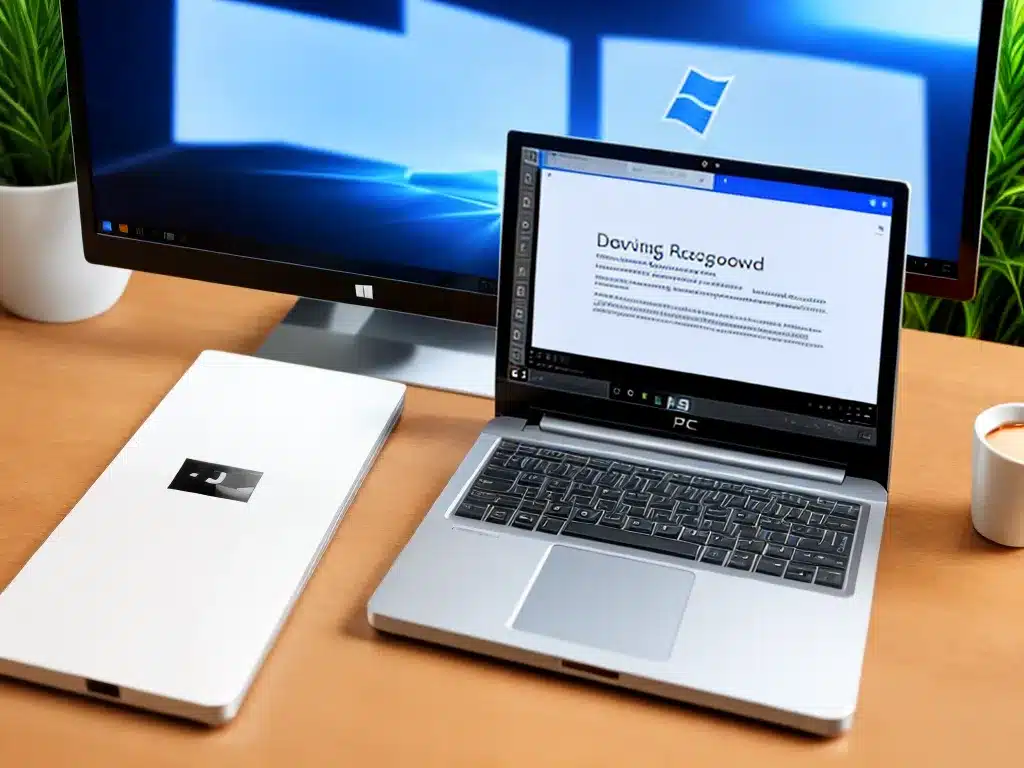
Introduction
Accidentally deleting an important file can be frustrating. Thankfully, with the right tools and techniques, recovering deleted files on Windows is often possible. In this comprehensive guide, I’ll explain everything you need to know about recovering deleted files on a Windows PC in 2024.
Why Files Can Be Recovered
When you delete a file on your Windows PC, it isn’t immediately erased from your hard drive. Instead, Windows simply marks the space occupied by the file as available for new data. The actual file contents remain on your hard drive until they are overwritten by new data. This leaves a window where file recovery software can scan your hard drive and restore deleted files.
However, you have a better chance of recovering deleted files if you act quickly before too much new data is written to your drive. The more your PC is used after deletion, the higher the chance of deleted file data being overwritten.
Recovering Deleted Files From the Recycle Bin
The easiest way to recover deleted files is from the Recycle Bin. When you delete files on Windows, they get sent to the Recycle Bin unless you permanently delete them by pressing Shift+Delete. To restore files from the Recycle Bin:
- Open the Recycle Bin – double click the icon on your desktop or open it from the start menu.
- Find the file(s) you want to restore.
- Right click on the file and select Restore to move it back to the original location.
Files in the Recycle Bin are removed after 30 days by default. If a file is no longer in the Recycle Bin, you’ll need to use file recovery software.
Using File Recovery Software
If a file is no longer in the Recycle Bin, your best chance of getting it back is with a file recovery program. Here are some of the top options for 2024:
1. Stellar Data Recovery
Stellar is one of the most reputable recovery software suites available. It can recover lost files from Windows, Mac, iPhone/iPad and Android devices.
Key features:
- Scans hard drives for recoverable deleted files.
- Restore lost media files like photos, video and audio.
- Has advanced photo repair capabilities.
- Can create disk images to recover data from failing drives.
- Supports data recovery from CDs, DVDs, and Blu-ray discs.
2. EaseUS Data Recovery Wizard
EaseUS is a popular free file recovery program for Windows with paid Pro options.
Key features:
- Quick and deep scan modes to find deleted files.
- Filter scan results by file type.
- Preview files before recovery.
- Retrieve data lost from partition errors or crashes.
- Backup tool to prevent future data loss.
3. Recuva
Recuva is a free deleted file recovery tool from the makers of CCleaner. It’s easy to use but limited compared to paid options.
Key features:
- Restore files removed from Recycle Bin.
- Deep scan and advanced recovery options available.
- Secure overwrite feature.
- Supported file types include documents, photos, video, music and email.
Best Practices for File Recovery
Follow these tips to improve your chances of recovering deleted files with Windows recovery software:
- Don’t save new data – Avoid writing new data to your hard drive after deletion.
- Stop using the drive – The less activity on your drive, the better.
- Scan quickly – Initiate scans as soon as possible before overwritten.
- Try multiple tools – If one can’t find your file, try another.
- Store recovered files elsewhere – Don’t save them onto the same drive.
Being prepared can also help with recovery. Make regular file backups and have a recovery tool ready in case you need it.
When File Recovery Fails
File recovery software doesn’t always work. Here are some reasons deleted files may be unrecoverable:
- Data has been completely overwritten by new content.
- The file was stored on a solid state drive (SSD). These drives handle deletion differently.
- The hard drive is mechanically failed or has corrupted sectors.
- Recovery took too long allowing data to be overwritten.
If you exhaust all options, some files may sadly be lost forever if no backups exist. But don’t worry, with the file recovery steps in this guide, you have an excellent chance of getting your files back. Just act quickly before data is overwritten and leverage the best recovery software available.
Conclusion
Recovering deleted files is often possible if you use the right methods. First look in the Recycle Bin, then use trusted file recovery software like Stellar, EaseUS or Recuva. Avoid overwriting your drive further to increase success. And make backups to avoid needing file recovery in the first place. By following this guide, you’ll be prepared to restore deleted files on your Windows PC.












